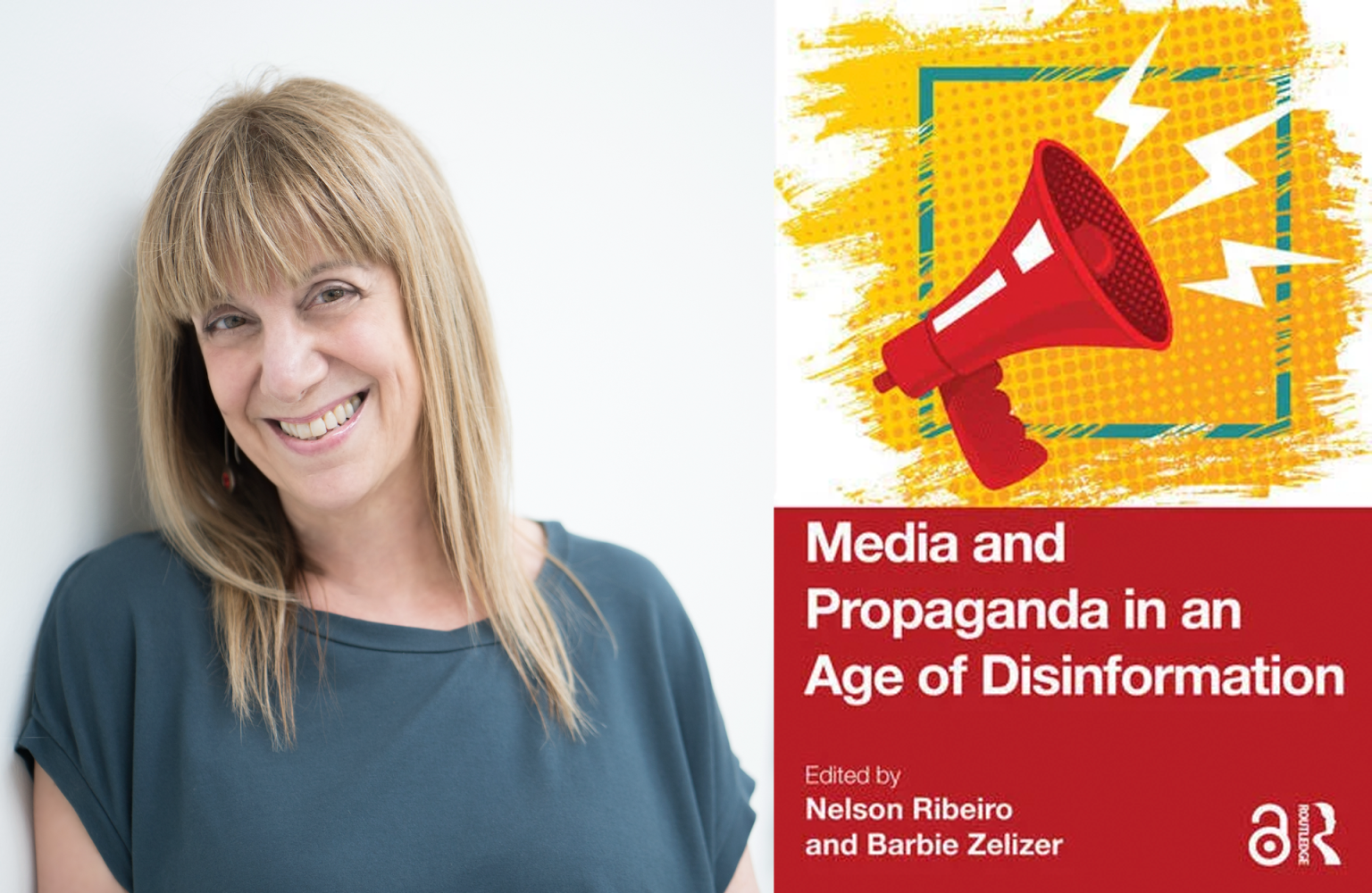Listen to the article
In a world awash with terms like “fake news,” “disinformation,” and “misinformation,” one scholar argues that we’ve neglected a crucial concept that ties them all together: propaganda.
Barbie Zelizer, Professor at the University of Pennsylvania’s Annenberg School for Communication, contends that propaganda remains a powerful force in today’s media landscape, despite falling out of favor in public discourse. Her new co-edited volume explores this overlooked phenomenon across different contexts and historical periods.
“Media and Propaganda in an Age of Disinformation,” edited by Zelizer and Nelson Ribeiro, Professor of Communication Studies at Universidade Católica Portuguesa, examines how propaganda operates across borders and subject matters, arguing that contemporary terms fail to capture its full scope and impact.
The book emerged from the Lisbon Winter School for the Study of Communication, a collaborative workshop that brings together early-career researchers and established scholars to examine pressing media and communication issues. For the past five years, Zelizer, who directs Annenberg’s Center for Media at Risk, has worked with Ribeiro to organize these gatherings.
“The workshop is designed to give advanced doctoral students and post-doctoral researchers the opportunity to engage with global experts on topics that are constantly evolving in meaning and significance,” explained Zelizer. Previous workshops have examined the intersection of media with themes such as fear, uncertainty, ambivalence, and populism.
The book compiles expanded versions of keynote addresses delivered at the Winter School, including a notable contribution from Annenberg Dean Sarah Banet-Weiser on how sexual violence threats function as propaganda tools. Additionally, the International Journal of Communication published a special section in 2024 featuring selected presentations from the workshop’s early-career participants.
Zelizer’s research points to a problematic tendency in democratic societies to avoid labeling information campaigns as “propaganda.” She traces this reluctance to Cold War binary thinking that associated propaganda exclusively with autocratic regimes while characterizing similar activities in democracies as mere “information” or “persuasion.”
“This idea—that autocracies propagandize while democracies persuade—has been strengthened ever since,” Zelizer notes. “It’s particularly prevalent today, where a combination of privatization, polarization, and digitization hides the similarities between current information disorder and traditional notions of propaganda.”
This reluctance to recognize propaganda in democratic contexts poses significant challenges for addressing today’s information crisis. According to Zelizer, the historical perspective reveals that the distinction between “good” and “bad” regimes—often associated with propaganda’s supposed absence or presence—is largely artificial.
“If we don’t link current information disorder to its historical antecedents more fully, we face the risk of being unable to mitigate its spread,” she warns.
The comparative study of propaganda across different political systems reveals important insights. While traditional top-down, state-controlled propaganda still exists, contemporary practices have evolved. Modern propaganda often substitutes private actors for state activity, employs lateral and multi-directional polarization rather than centralized control, and leverages digital technology instead of traditional media channels.
Zelizer advocates for a more comprehensive understanding of propaganda that encompasses various forms of information manipulation prevalent today. “We need to do a better job of identifying propaganda that works differently from the traditional model and to be clearer about how notions like disinformation, misinformation, and fake news are all very much varying forms of propaganda,” she argues.
The volume represents a significant contribution to media studies at a time when information integrity faces unprecedented challenges. By reframing contemporary media manipulation through the historical lens of propaganda, Zelizer and her colleagues offer valuable context for understanding today’s complex information environment.
As societies worldwide grapple with declining trust in media institutions and the proliferation of misleading information, Zelizer’s work suggests that recovering and updating our understanding of propaganda may be essential to restoring a healthier information ecosystem.
Verify This Yourself
Use these professional tools to fact-check and investigate claims independently
Reverse Image Search
Check if this image has been used elsewhere or in different contexts
Ask Our AI About This Claim
Get instant answers with web-powered AI analysis
Related Fact-Checks
See what other fact-checkers have said about similar claims
Want More Verification Tools?
Access our full suite of professional disinformation monitoring and investigation tools




8 Comments
Fascinating topic on the evolving landscape of media and propaganda. Unpacking the complexities of disinformation and its impact is crucial in this digital age. I’m curious to learn more about how propaganda manifests across different contexts and mediums.
Agreed, the blurring of lines between news, opinion, and propaganda is a growing challenge. Understanding the historical context and modern dynamics will be key to navigating this complex issue.
The Lisbon Winter School for the Study of Communication sounds like an excellent forum to explore these critical media and communication topics. Collaboration between early-career and established scholars is invaluable for shedding light on the nuances of propaganda.
Absolutely, interdisciplinary exchange is crucial for grappling with the evolving nature of propaganda in the digital age. Looking forward to insights from this new book on the subject.
Interesting that the term ‘propaganda’ has fallen out of favor in public discourse, despite its continued relevance. This underscores the need for more rigorous examination of how it manifests and impacts society, beyond simplistic labels like ‘fake news’.
As someone interested in the intersection of media, communication, and societal issues, I’m eager to learn more from this new book. Unpacking the complex dynamics of propaganda feels increasingly vital in our era of digital information overload.
The book’s emphasis on exploring propaganda across borders and subject matters is an important approach. Disinformation can take many forms and transcend geographic and topical boundaries, requiring a holistic understanding.
Agreed, a nuanced, multi-dimensional view is essential for addressing the pervasive challenge of propaganda in today’s media landscape.